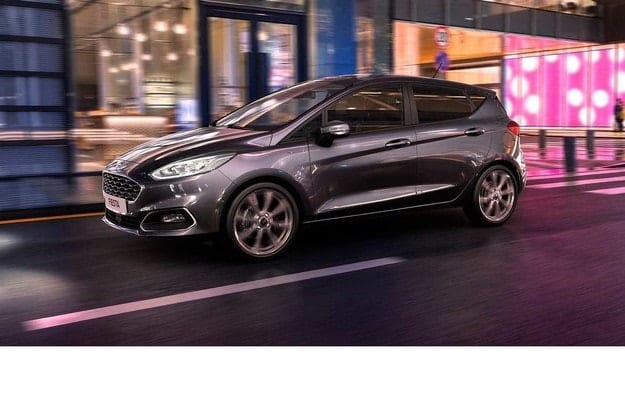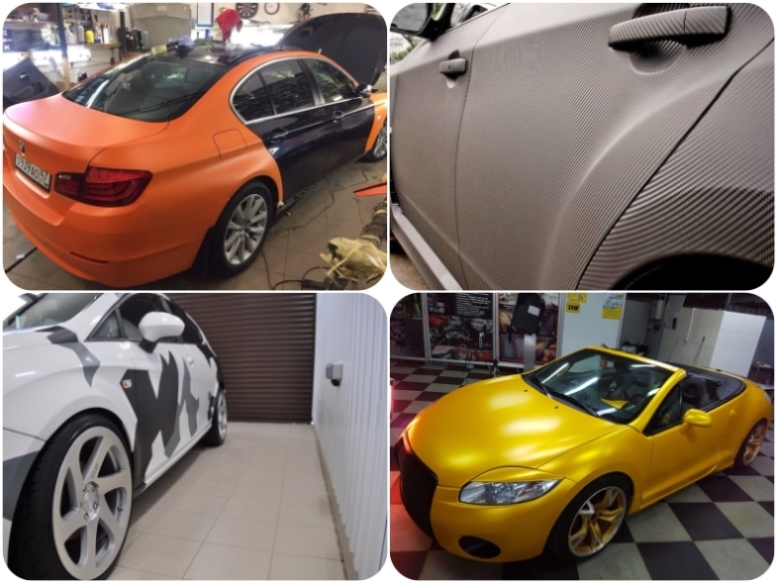
Ways to wrap your car with vinyl wrap
Content
Auto vinyl wrapping helps to create a memorable style and provide additional protection against theft - the car becomes recognizable.
Pasting with autovinyl, resembling a plastic coating in structure, is cheaper than painting, helps to hide defects and protect the paint layer from damage.
Is it worth gluing vinyl on a car
Saving a new car or giving it a specific look allows not only painting or applying an airbrush pattern. Autofilm serves as tuning and additional protection.
The technique of pasting a car with a vinyl film is used for:
- saving LKS after purchase;
- restoring the appearance of the car;
- protection from the negative impact of the external environment, corrosive factors and possible damage;
- hiding existing defects.
Autovinyl hides scratches or dents, works as a protective layer, protecting the paint from fading and precipitation. Transparent film retains mirrors or optics. Correct application provides a service life of up to 7 years. A large selection of shades helps to change the style at the request of the motorist.

Types of vinyl film
Vinyl film is:
- matte and glossy;
- textured;
- carbon;
- mirror.
It differs in thickness and width, strength characteristics and durability. Anti-vandal autovinyl gives additional strength to the glass and does not allow intruders to break the window and take valuables from the car. Armored film is more expensive, but significantly increases safety.
Auto vinyl wrapping helps to create a memorable style and provide additional protection against theft - the car becomes recognizable.
If the outer layer is slightly damaged, its restoration will require less effort than painting. Removing or dragging the film is simple, the process does not take much time.
How to choose and calculate the material for pasting with vinyl
To wrap a car with vinyl, you need to correctly calculate the amount of auto film. The latter is influenced by the body format and the type of film - not all stretch equally well.
High-quality auto vinyl is selected according to a number of parameters:
- adhesive layer. Acrylic is suitable for wet application, the most common. Expensive films are characterized by repositioning, are applied by a dry method and adhere to the surface more reliably.
- Hue. White, transparent and black ones last longer and are less prone to fading. Among the colored ones, blue and green, camouflage, endure exposure to sunlight.
- Service duration. Calendered films shrink and are used for up to 5 years. Cast are designed for 7-10 years.
- Width. The standard for car films is 1,5-1,52 m, so that body elements of even large vehicles can be fitted without joints.
- Price. Films of high quality and assuming a long service life will be more expensive.
Calculate how much material is needed to wrap the car with vinyl wrap. Several measurements of body parts are carried out - the roof, trunk, bumpers front and rear. Employees of car dealerships help to calculate correctly.
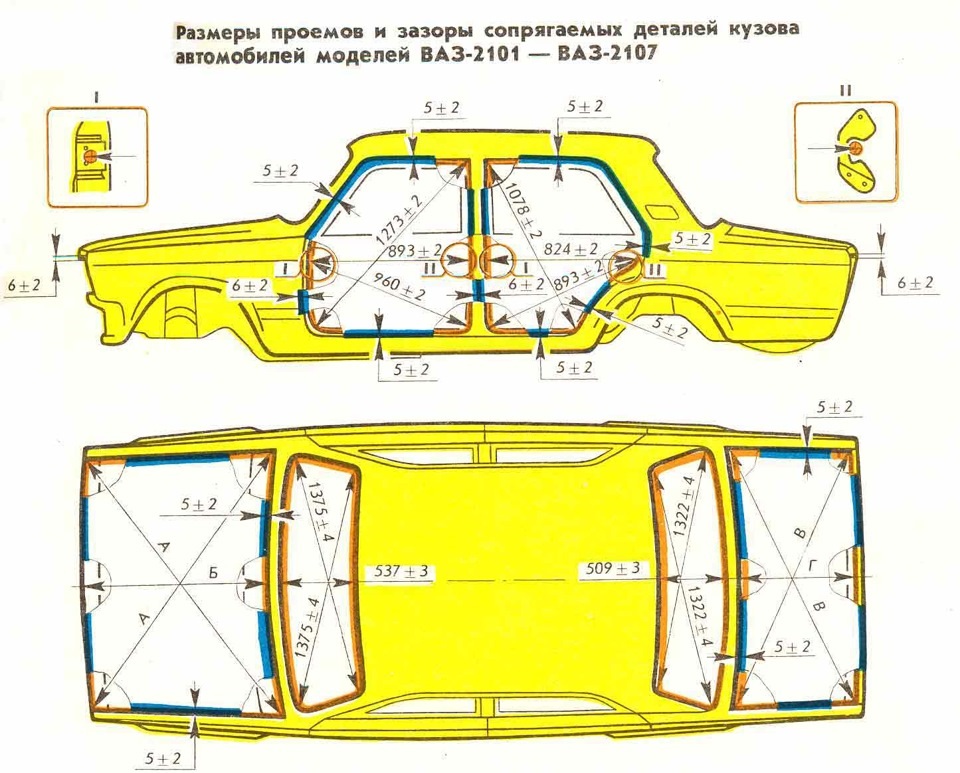
car body measurements
- For SUVs, an average of 23 to 30 meters is required.
- The sedan needs from 17 to 19 meters.
- Crossovers will need from 18 to 23 meters.
Optimum width 152 cm.
Preparing your car for vinyl wrap
Wrapping a car with vinyl means full coverage of the body. Autovinyl does not let the sun's rays through to the paint layer, partial gluing will provoke uneven fading.
For work, a warm room with good lighting is selected. To glue the film, the temperature should not fall below 20C, otherwise the adhesive layer will lose its adhesive characteristics. The floor covering is wetted to prevent dust from entering. At home, it is important to achieve cleanliness in the garage, the smallest dust particles can spoil the result. In the open air, pasting is not allowed.
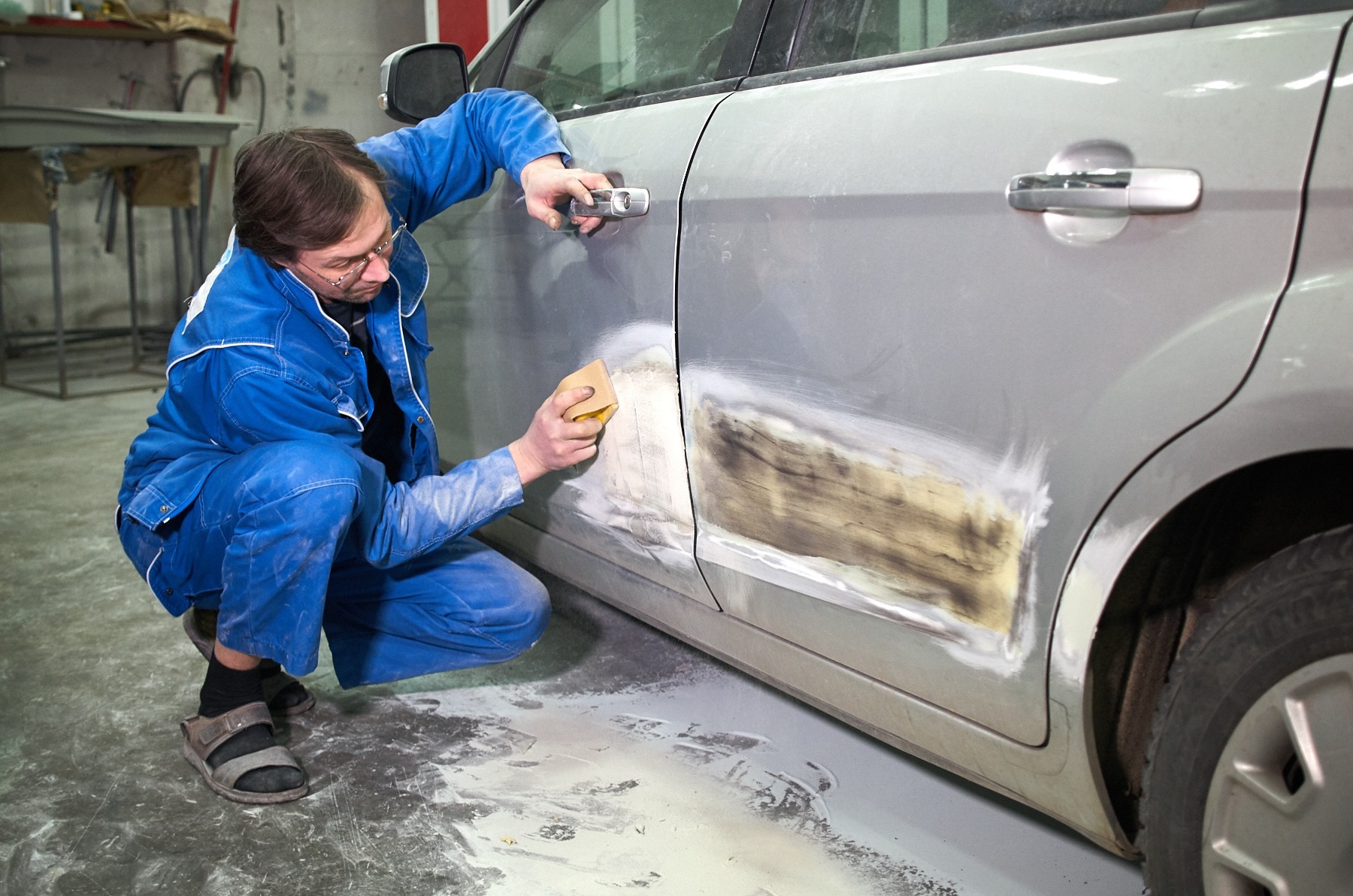
Preparing your car for wrapping with vinyl
Optimal cleanliness of the body can be achieved by using polishing.
The preparation of the machine is carried out as follows:
- areas where the LKS departs are preliminarily cleaned;
- for application in hard-to-reach areas, the body is disassembled;
- the surface is washed and dried;
- white spirit or other degreasing agent is used.
During the gluing process, where the film is folded, an additional primer is applied to ensure reliable adhesion.
The choice of pasting method and preparation of tools
You need to start with cutting. The step-by-step methodology for both dry and wet application is the same:
- The surface is thoroughly cleaned, prepared and degreased.
- It is covered with auto film in the direction from the center to the edges.
- It flattens and warms up.
- The mounting layer is removed.
To wrap a car with vinyl film, you need to prepare:
- sharp clerical knife;
- material (thickness from 80 to 200 microns);
- a spray bottle filled with an aqueous soapy solution;
- Painting tape;
- felt squeegee;
- lint-free napkins;
- plastic spatula;
- technical hair dryer;
- primer.

Car Wrap Tools
You can also use a regular hair dryer. It is not necessary to stretch the film strongly. When self-applying, it is advisable to invite an assistant.
Soap solution is prepared in the proportion of 10 parts of water to one part of detergent, baby shampoo or liquid soap.
Drying with car vinyl in a dry way
The technology is suitable for experienced ones, since autovinyl pasting is done directly on the surface without the ability to correct inaccuracies. It is not necessary to dry the film, and the coating can be used longer.
The material is pre-cut:
- The film is applied around the perimeter and secured with masking tape.
- Labels are applied with a margin.
- Autovinyl is cut with scissors or a knife.
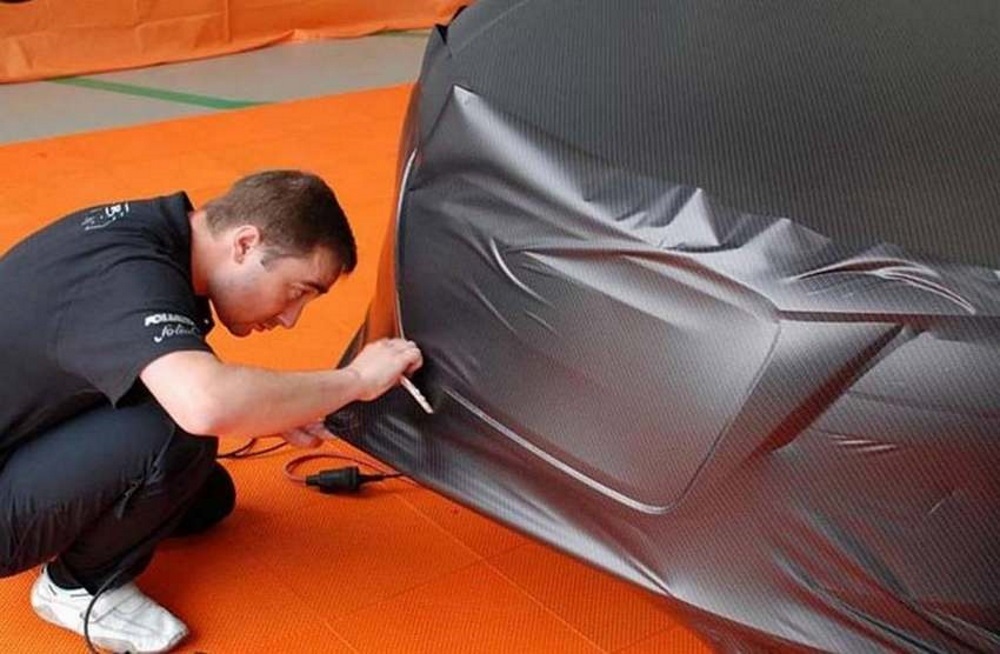
Drying with car vinyl in a dry way
It is necessary to cut the autofilm taking into account the tolerances for bending around convex elements. The banner is made on a dry surface, the coating is heated, leveling with a felt spatula. Wipe with a napkin.
The heating temperature does not exceed 50-70 degrees, otherwise the shade will change, the material may deform and become unusable.
Wet vinyl wrapping
The method is recommended for beginners who want to carry out pasting on their own when there is no master nearby. The adhesive layer or car body is pre-moistened. After applying the autofilm, it is straightened, carefully removing excess soap solution and air bubbles with a spatula and a technical hair dryer.
To glue the vinyl film on the car, you need to follow the instructions:
- An aqueous soapy composition is applied.
- The protective layer is removed from the vinyl.
- The material is applied from the center, smoothed out towards the edges.
- The trapped air is removed with a spatula or squeegee.
- The bends are heated with a hairdryer, an additional primer is applied - on the edges from the side of the adhesive layer.

Squeegee 3M plastic with felt strip for auto film
When using the wet gluing method, it is important to dry the vehicle completely. If the procedure was carried out in the cold season, the under-dried film may fall off in the cold. To avoid unevenness, increase the heat. When autovinyl is applied to the entire surface of the body, it is heated.
Complete drying after wrapping the car with vinyl occurs in ten days. During this period, it is not recommended to wash the car or drive at high speeds. When it is minus outside, it is advisable to leave the car in a warm room for this period.
Autofilm needs some care and regular cleaning. The gun during washing should not be placed close to the coating, so that delamination does not occur. Polishing is allowed if the applied vinyl is not matte. Over time, the layer turns yellow, it is recommended to replace it in a timely manner.

